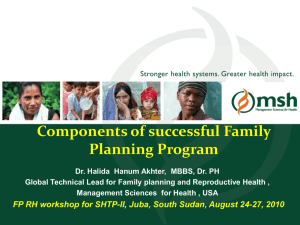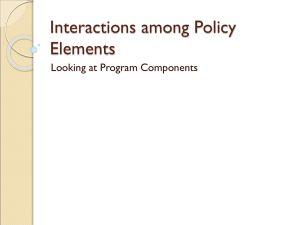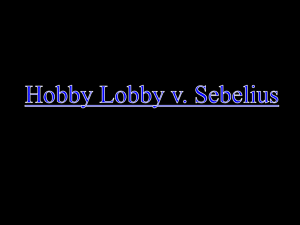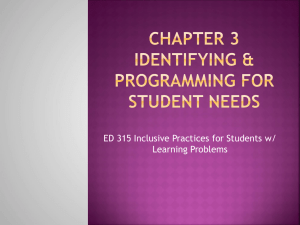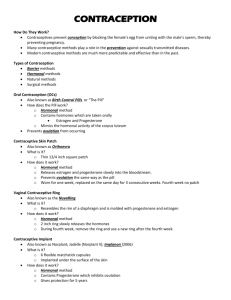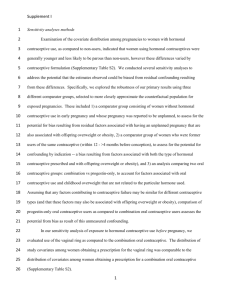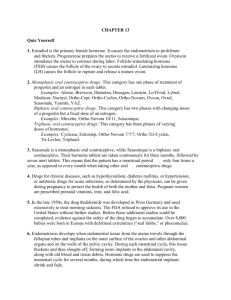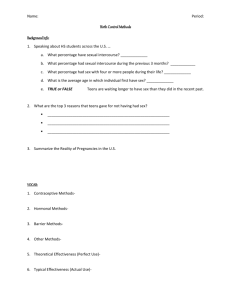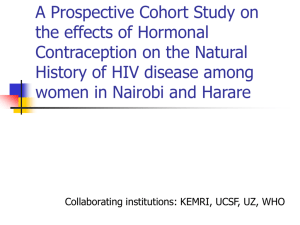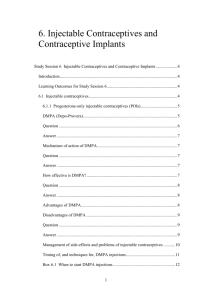Contraception for Women Who Are HIV+
advertisement
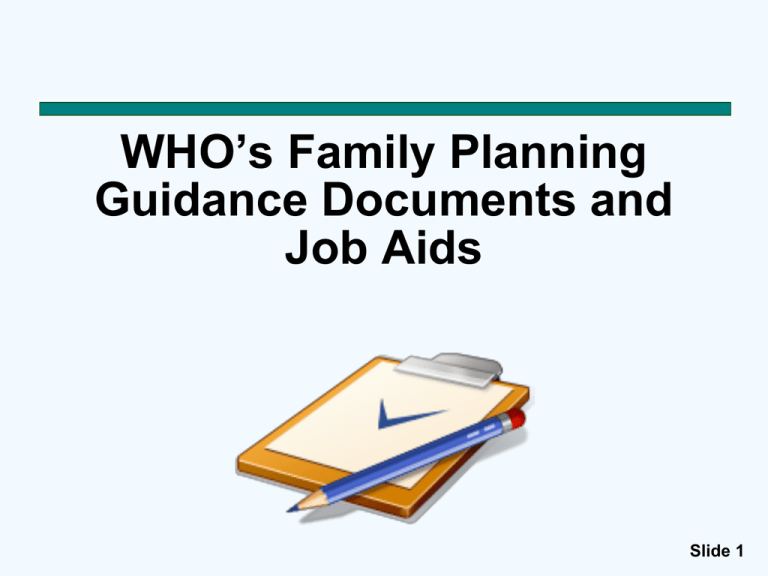
WHO’s Family Planning Guidance Documents and Job Aids Slide 1 Objectives At the end of this session, participants will be able to: Explain the purpose and intended use of WHO’s guidelines and job aids: • Medical Eligibility Criteria for Contraceptive Use (MEC) including job aids • Selected Practice Recommendations for Contraceptive Use (SPR) • Family Planning: A Global Handbook for Providers Slide 2 Medical Eligibility Criteria for Contraceptive Use • Evidence-based recommendations • Use by policy-makers and program managers to improve access to, and quality of, family planning services • 19 contraceptive methods • Variety of medical conditions and client characteristics • Periodic reviews and updates Slide 3 Selected Practice Recommendations for Contraceptive Use • Evidence-based recommendations on safe and effective use • 33 questions related to contraceptive methods • Range of issues including initiation, continuation, incorrect use, treatment of side effects, and some programmatic issues • Use by policy-makers and program managers • Periodic reviews and updates; latest update 2008 Slide 4 Family Planning: A Global Handbook for Providers • Essentials needed to provide family planning clients with good-quality care • Latest guidance for delivering 19 contraceptive methods appropriately and effectively • Use by clinical providers • Periodic reviews and updates; latest update 2011 Slide 5 WHO’s Medical Eligibility Criteria Categories for IUDs, Hormonal and Barrier Methods Category Description When clinical judgment is available 1 No restriction for use Use the method under any circumstances 2 Benefits generally outweigh risks Generally use the method 3 Risks usually outweigh benefits Use of method not usually recommended, unless other methods are not available/acceptable 4 Unacceptable health risk Method not to be used Source: WHO, 2010. Slide 6 WHO’s Medical Eligibility Criteria Categories for IUDs, Hormonal and Barrier Methods Category When clinical judgment is limited 1 Use the method 2 3 Do not use the method 4 Source: WHO, 2010. Slide 7 Categories for IUDs, Hormonal and Barrier Methods Medical Eligibility Criteria: Examples Medical Condition/ Characteristic Contraceptive Method Category Uterine fibroids COCs 1 Anemia Copper IUD 2 Blood pressure ≥160/100 mm Hg DMPA 3 Current breast cancer Hormonal implants 4 Source: WHO, 2010. Slide 8 WHO’s Medical Eligibility Criteria Categories for Male and Female Sterilization Category Definition Accept No medical reason to deny method Caution Provide with extra precautions Delay Delay until condition is evaluated Special Requires specialized equipment, experienced surgeon and staff Source: WHO, 2010. Slide 9 Medical Eligibility Criteria for Male or Female Sterilization: Examples Category Conditions Accept Have few or no children Caution Diabetes Delay Active STIs (e.g., chlamydia or gonorrhea) Special Coagulation disorders Source: WHO, 2010. Slide 10 WHO’s Medical Eligibility Criteria Categories for Fertility Awareness-based Methods Category Definition Accept No medical reason to deny method Caution Provide with extra precautions (e.g., special counseling) Delay Delay until condition is evaluated NA Not applicable Source: WHO, 2010. Slide 11 Medical Eligibility Criteria for FAB Methods: Examples Category Conditions Accept Non-breastfeeding ≥ 4 weeks postpartum can use symptoms method Caution Life stages (post-menarche and peri-menopause) Delay Breastfeeding < 6 weeks postpartum NA Pregnancy Source: WHO, 2010. Slide 12 MEC Wheel Includes COCs, POPs, DMPA, NET-EN, implants, and copper IUDs Slide 13 MEC Quick Reference Chart Includes all category 3 & 4 conditions for COCs, DMPA, IUDs, and implants Slide 14

